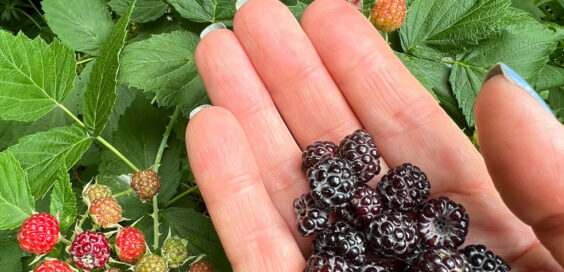
Creature Feature – Black Raspberries a Sweet Taste of Summer
Posted by Dustin Horton // July 19, 2023 // Articles, Creature Feature
When I was a child, I would roam a tract of scrub land bordering the neighborhood. “The Gully,” as we knew it, was part of a bygone railroad bed reclaimed by early succession of trees, thickets and grasses. Just after school let out each summer, my brother John and I would wander The Gully in search of wild black raspberries. A sweet memory in every way! Now, decades later, whenever I pick wild berries, I think of John. Nostalgic sentiments aside, no store-bought fruit can rival the sun-soaked sweetness of berries that ripen naturally, in their due time.
Black raspberries are native perennials in the rose family. Commonly called Thimbleberries or Blackcaps, black raspberries leave their cores on the stem when picked, resulting in hollow fruit (a good way to discern them from blackberries, which separate from the stem with solid cores). Black raspberries grow in fields and other open spaces where they can spread quickly and grow quite tall. The prickly canes have a whitish cast and tend to arch over outside the patch to set roots from their tips. Leaves are toothed with a pale, silvery underside. The white, five-petaled flowers bloom late spring through early summer, and as the berries ripen, they turn from white to red to a deep purple-black when ready to pick.
Black raspberry plants are highly beneficial to wildlife—the flowers attract numerous pollinators, and the leaves and fruit are enjoyed by many different mammals, birds and insects. After eating the berries, these animals spread the seeds to new locations.
Article & photo by Margie Manthey












